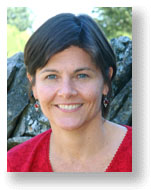Hands-on, Practical Guidance for Educators
From math,
literacy, equity, multilingual learners, and SEL, to assessment, school counseling,
and education leadership, our books are research-based and authored by experts
on topics most relevant to what educators are facing today.
Bridging School and Home Through Family Nights
Ready-to-Use Plans for Grades K-8
Improve student achievement through academically focused family nights!
The more a parent takes part in his or her child's schoolwork, the more likely that child will succeed academically. This resource offers all the information, materials, and resources for planning and implementing events that increase family involvement. Drawing on experience and research, the authors include information on adapting events for special populations, issues on providing food and incentives, and cost-saving ideas. Chapters provide event procedures, needed materials lists, connections with national standards, and numerous reproducibles, including:
The more a parent takes part in his or her child's schoolwork, the more likely that child will succeed academically. This resource offers all the information, materials, and resources for planning and implementing events that increase family involvement. Drawing on experience and research, the authors include information on adapting events for special populations, issues on providing food and incentives, and cost-saving ideas. Chapters provide event procedures, needed materials lists, connections with national standards, and numerous reproducibles, including:
- Invitations
- Agendas
- Sign-in sheets
- Evaluation forms
- Activity worksheets
- Handouts
- Overheads
Product Details
- Grade Level: K-8
- ISBN: 9781412914673
- Published By: Corwin
- Year: 2005
- Page Count: 192
- Publication date: May 11, 2015
Review Copies
This book is not available as a review copy.



